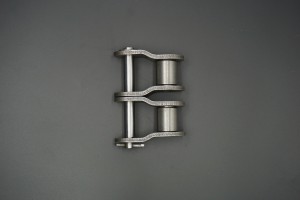Commonly found in a variety of industrial and mechanical applications, roller chains play a vital role in efficiently transmitting power. However, a common problem that users often encounter is that roller chains lose tension over time. In this blog post, we’ll explore the reasons behind this frustrating problem and offer possible solutions to help you maintain optimal chain tension.
Insufficient initial tension:
One of the main reasons why roller chains tend to lose tension is due to insufficient initial tension during installation. When an insufficient chain tension is installed, the chain may start to elongate under load, causing the chain to slack. To ensure a safe installation, it is imperative to follow the manufacturer’s recommendations for initial tension levels and follow precise installation procedures.
Wear and stretch:
Roller chains are subject to constant stress and wear during operation, which can lead to elongation and stretching over time. This elongation can be caused by prolonged use, insufficient lubrication, or exposure to high temperatures. When a chain stretches, it loses tension, affecting its overall performance. Regularly inspecting the chain for signs of wear and replacing it if necessary will help prevent loss of tension.
Insufficient lubrication:
Proper lubrication is critical to maintaining the performance and life of your roller chain. Insufficient lubrication can lead to increased friction between chain components, resulting in accelerated wear and chain elongation. As the chain stretches, its tension decreases. To prevent this from happening, it is important to use a high-quality lubricant suitable for the specific application and to perform regular lubrication maintenance as recommended by the manufacturer.
dislocation:
Another common cause of tension loss in roller chains is misalignment. When the sprockets are misaligned, the chain is forced to run at an angle, causing uneven load distribution and increased stress on the chain. Over time, this tension can cause the chain to lose tension and cause premature failure. Proper alignment of the sprockets is critical to ensuring even tension distribution and minimizing tension loss.
overload:
Excessive tension on a roller chain can cause it to lose tension quickly. Overloading a chain beyond its rated capacity can cause premature wear, stretching, and even failure. The load capacity of the chain must be determined and ensured that it is not overloaded. If the application requires higher loads, choosing a chain with a higher rated capacity or investing in a system with multiple roller chains can help distribute the load more evenly and prevent loss of tension.
Regular maintenance and inspection:
Maintaining proper tension in roller chains requires regular maintenance and inspections. Regular maintenance should include checking for signs of wear, measuring tension levels, lubricating if necessary, and replacing worn or damaged parts. Regular inspections help identify potential problems early and take appropriate corrective action before serious tension loss occurs.
Understanding why roller chains lose tension is the first step in preventing this common problem. By ensuring proper initial tension, adequate lubrication, alignment, load distribution and regular maintenance, you can significantly reduce roller chain tension loss and increase its overall life. Remember, a well-maintained roller chain not only ensures optimum performance, but also improves the safety of associated equipment and personnel.
Post time: Aug-12-2023

